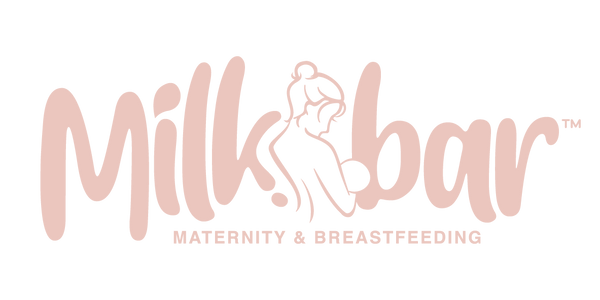
Five Common Breastfeeding Problems (and How to Tackle Them)
Share
Breastfeeding can be harder than anticipated. For our favorite must have items to help you on your journey, check out our range of Breast Pumps and Accessories - Plus get 15% off using the code MUM15 on orders over $80!
Five Common Breastfeeding Problems (and How to Tackle Them)
Embarking on the beautiful journey of breastfeeding is an incredible and transformative experience for mothers. However, it's not without its challenges. Understanding and overcoming common breastfeeding problems is crucial for a smoother and more enjoyable nursing experience. Here, we delve into five prevalent issues and provide practical solutions to tackle them head-on.
1. Cracked Nipples: One of the most common complaints among breastfeeding mothers is cracked nipples. The culprit can range from incorrect latching and dry skin to thrush and pumping technique issues. To tackle this problem:
-
Check Your Baby's Position: Ensure your baby's latch is correct, with the bottom part of your areola in their mouth.
-
Ice Before Feeding: Apply a brief ice pack before feeding to numb the area, especially during the initial latch-on, when pain is most acute.
-
Frequent, Shorter Feeds: Consider breastfeeding more frequently for shorter intervals to reduce the intensity of your baby's sucking.
-
Nipple Protection: Use Milkbar Breast Pads or nipple shields for added protection against friction or dampness.
2. Mastitis: Mastitis, an infection affecting the breast, can be painful and requires prompt attention. Recognize the symptoms—shiny, hot, red areas on the breast, often accompanied by chills, fever, nausea, and fatigue. Tackle mastitis with these strategies:
-
Consult Your Doctor: Seek medical advice promptly. Your doctor may prescribe antibiotics and recommend rest.
-
Continue Breastfeeding: Stopping breastfeeding may exacerbate the issue. Continue to breastfeed, and consider using warm compresses to soften engorged areas.
-
Massage: Regular massage, especially before, during, and after breastfeeding, helps break up blockages and encourages smooth milk flow.
For a more detailed exploration of Mastitis and Blocked Ducts, refer to our comprehensive blog here.
3. Low Milk Supply: Low milk supply is a common concern that can lead to frustration. However, there are effective ways to boost your milk production:
-
Self-Care: Prioritise your well-being by staying hydrated and consuming nourishing foods. Lactation cookies, oats, nursing tea, and even non-alcoholic beer can be beneficial.
-
Feed on Demand: Forget strict schedules and feed your baby on demand. Express at feed times, especially if you're using a bottle.
-
Invest in a Quality Breast Pump: Consider the Milkbar Breast Pump for efficient breast drainage, resulting in increased milk output.
For additional tips on increasing breastmilk supply, explore our dedicated blog article here.
4. Breastfeeding in Public: While societal norms around public breastfeeding have evolved, many mothers still feel self-conscious. Overcome this challenge with the following suggestions:
-
Practice at Home: Gain confidence by practicing breastfeeding positions that make you feel comfortable and less exposed.
-
Choose Comfortable Clothes: Invest in breastfeeding clothes that allow discreet access to your breasts without having to remove layers.
-
Use a Wrap or Cover-up: If you desire extra coverage, practice at home with a wrap or cover-up to ensure your baby is comfortable.
5. Keeping Baby Awake While Feeding: A common frustration is when babies fall asleep at the breast. Combat this issue with these practical tips:
-
Stimulation Techniques: When you notice your baby's sucking slowing down, stimulate them by burping, tickling their feet, stroking under their chin, gently blowing on their face, or changing their diaper.
-
Breast Compressions: Gentle breast compressions during feeding can wake your baby up with a mouth full of milk.
-
Experiment with Positions: Opt for less sleep-inducing positions, such as the football hold or a straddling position.
Remember, breastfeeding should be a positive and comfortable experience for both you and your baby. Don't hesitate to seek help from healthcare professionals or join supportive communities like our Milkbar Mum Chat on Facebook.
Navigating these common breastfeeding challenges with patience and the right strategies can lead to a more fulfilling and joyful breastfeeding journey. Together, we're here to support you every step of the way!
